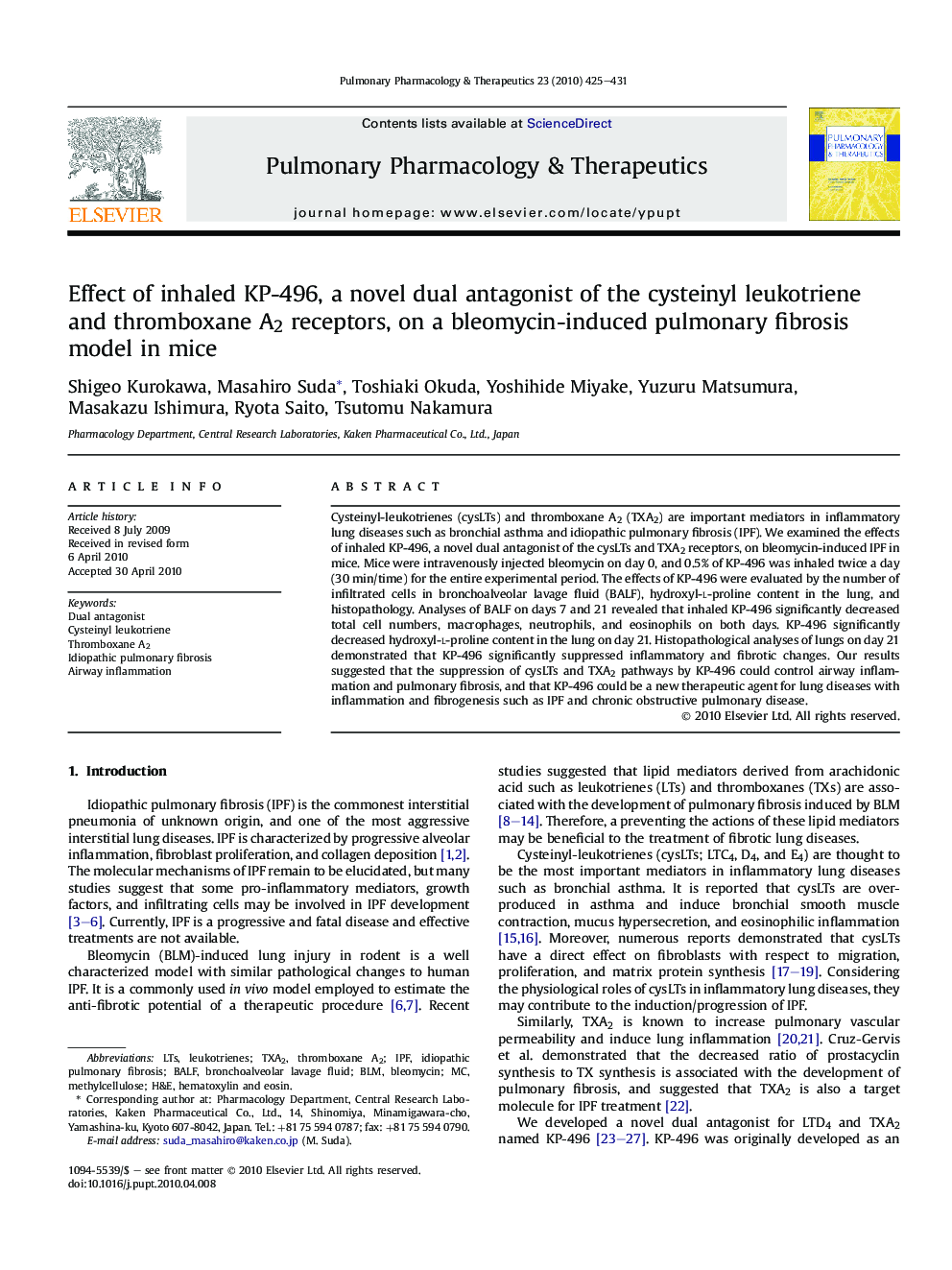| Article ID | Journal | Published Year | Pages | File Type |
|---|---|---|---|---|
| 2567292 | Pulmonary Pharmacology & Therapeutics | 2010 | 7 Pages |
Cysteinyl-leukotrienes (cysLTs) and thromboxane A2 (TXA2) are important mediators in inflammatory lung diseases such as bronchial asthma and idiopathic pulmonary fibrosis (IPF). We examined the effects of inhaled KP-496, a novel dual antagonist of the cysLTs and TXA2 receptors, on bleomycin-induced IPF in mice. Mice were intravenously injected bleomycin on day 0, and 0.5% of KP-496 was inhaled twice a day (30 min/time) for the entire experimental period. The effects of KP-496 were evaluated by the number of infiltrated cells in bronchoalveolar lavage fluid (BALF), hydroxyl-l-proline content in the lung, and histopathology. Analyses of BALF on days 7 and 21 revealed that inhaled KP-496 significantly decreased total cell numbers, macrophages, neutrophils, and eosinophils on both days. KP-496 significantly decreased hydroxyl-l-proline content in the lung on day 21. Histopathological analyses of lungs on day 21 demonstrated that KP-496 significantly suppressed inflammatory and fibrotic changes. Our results suggested that the suppression of cysLTs and TXA2 pathways by KP-496 could control airway inflammation and pulmonary fibrosis, and that KP-496 could be a new therapeutic agent for lung diseases with inflammation and fibrogenesis such as IPF and chronic obstructive pulmonary disease.
